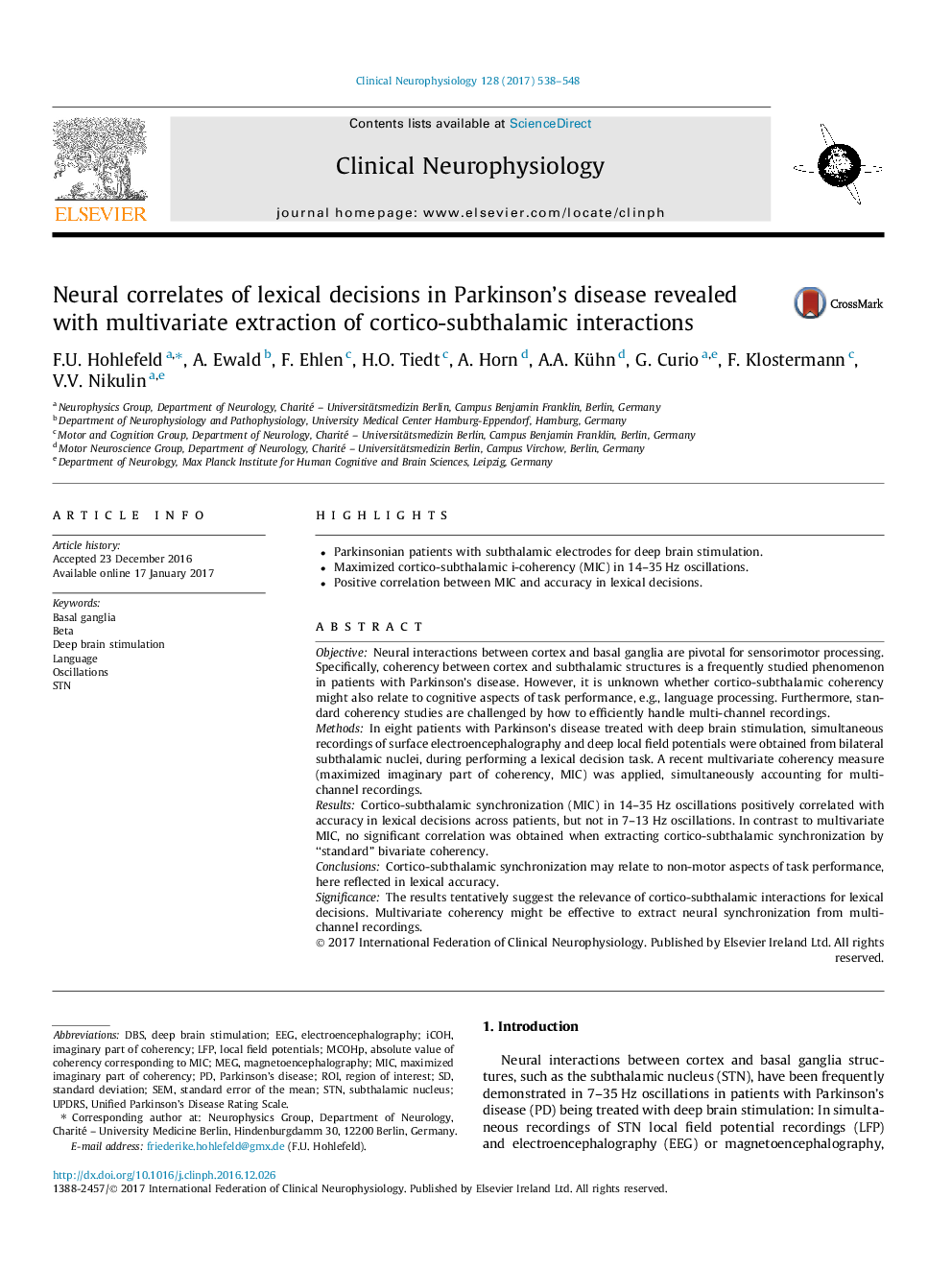| Article ID | Journal | Published Year | Pages | File Type |
|---|---|---|---|---|
| 5627646 | Clinical Neurophysiology | 2017 | 11 Pages |
â¢Parkinsonian patients with subthalamic electrodes for deep brain stimulation.â¢Maximized cortico-subthalamic i-coherency (MIC) in 14-35 Hz oscillations.â¢Positive correlation between MIC and accuracy in lexical decisions.
ObjectiveNeural interactions between cortex and basal ganglia are pivotal for sensorimotor processing. Specifically, coherency between cortex and subthalamic structures is a frequently studied phenomenon in patients with Parkinson's disease. However, it is unknown whether cortico-subthalamic coherency might also relate to cognitive aspects of task performance, e.g., language processing. Furthermore, standard coherency studies are challenged by how to efficiently handle multi-channel recordings.MethodsIn eight patients with Parkinson's disease treated with deep brain stimulation, simultaneous recordings of surface electroencephalography and deep local field potentials were obtained from bilateral subthalamic nuclei, during performing a lexical decision task. A recent multivariate coherency measure (maximized imaginary part of coherency, MIC) was applied, simultaneously accounting for multi-channel recordings.ResultsCortico-subthalamic synchronization (MIC) in 14-35Â Hz oscillations positively correlated with accuracy in lexical decisions across patients, but not in 7-13Â Hz oscillations. In contrast to multivariate MIC, no significant correlation was obtained when extracting cortico-subthalamic synchronization by “standard” bivariate coherency.ConclusionsCortico-subthalamic synchronization may relate to non-motor aspects of task performance, here reflected in lexical accuracy.SignificanceThe results tentatively suggest the relevance of cortico-subthalamic interactions for lexical decisions. Multivariate coherency might be effective to extract neural synchronization from multi-channel recordings.
